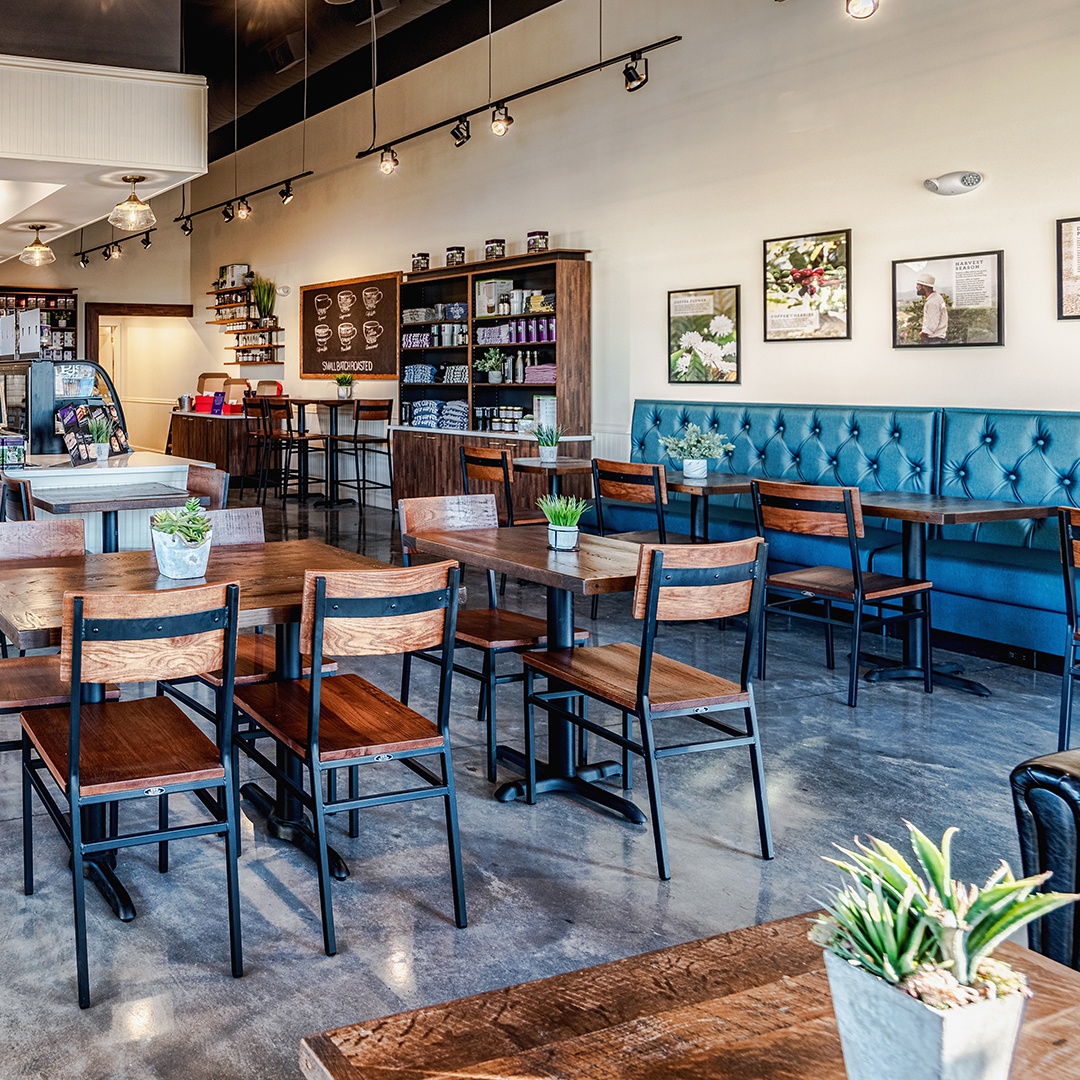The shape of a table is just the shape of the table, right? Wrong! The differences in round and square table tops represent a change in the flow of your restaurant and how easy it is to rearrange and accommodate various party sizes.
Round tables are a flexible option because of how many people they can sit. It’s much easier for a hostess to squeeze in an extra person at a round top without defined edges and designated sides of the table. Restaurant owners should consider their fare before choosing a round table. Because of the “squeeze” factor, you don’t want to be cramming people in if your meals require multiple plates and more space. Round tables, especially larger sizes, can take up quite a bit of space, creating the perfect visual effect for a more cavernous restaurant.
Square tables have a huge benefit in their versatility in that they are easy to push together to accommodate a larger party. Suddenly, your 15 table tops can transform into nine square tops and two rectangle tops by pushing three tops together. Having this kind of flexibility can be very advantageous if the party size that comes into your restaurant varies from night to night, or even the time of day. Our most frequent recommendation to restaurant owners is to order two different size tops that have the same edge length (such as a 30” x 30” and a 30” x 48”) so it’s easy to line up sizes when combining table tops for bigger parties.
If you’re trying to compare table shapes with how many can occupy each size, here’s a handy table to help:
| Table Size (Inches) | Table Shape | This Table Sits… |
| 24” | Round | 2 people |
| 24” | Square | 2 people |
| 30” | Round | 3-4 people |
| 30” | Square | 2-4 people |
| 36” | Round | 3-4 people |
| 36” | Square | 4 people |
| 42” | Round | 4-5 people |
| 42” | Square | 4-8 people |
| 48” | Round | 4-5 people |
| 60” | Round | 8 people |
| 72” | Round | 10-12 people |
Another important to factor to consider when choosing between round and square tables is accessibility and ADA compliance. To accommodate space for a wheelchair, tables and counters need to be between 28”-34” tall and have knee space of least 30” wide, 27” high, and 19” deep. You should keep this in mind with your table top and base selection; some disc bases that have a solid, wider footprint can prevent a wheelchair from going in.
At least five percent (or one if your count is under 20) of your tables need to be wheelchair-accessible for your customers.
Using both table shapes in your restaurant can shake up your layout, especially if you’re working with a small space. There are a couple ways you can do this to add visual interest without seeming too cluttered. Restaurants that offer a private party room can buy both shapes, utilize larger round tables in the party room since they are best fit for bigger groups, and use square tables in the dining area where you have more flexibility. You could also put bar height bases under a few round tables and create high tops, leaving the rest of the dining room as square tables.
Whatever table shape with you choose for your restaurant, be sure to keep at least 54” between round tables and 60” between square or rectangular tables to create a manageable service space to keep both guests and your servers happy.
Need help getting started? Visit our site or give our customer care specialists a call at 800-986-5352 to choose table tops and more for your restaurant.






